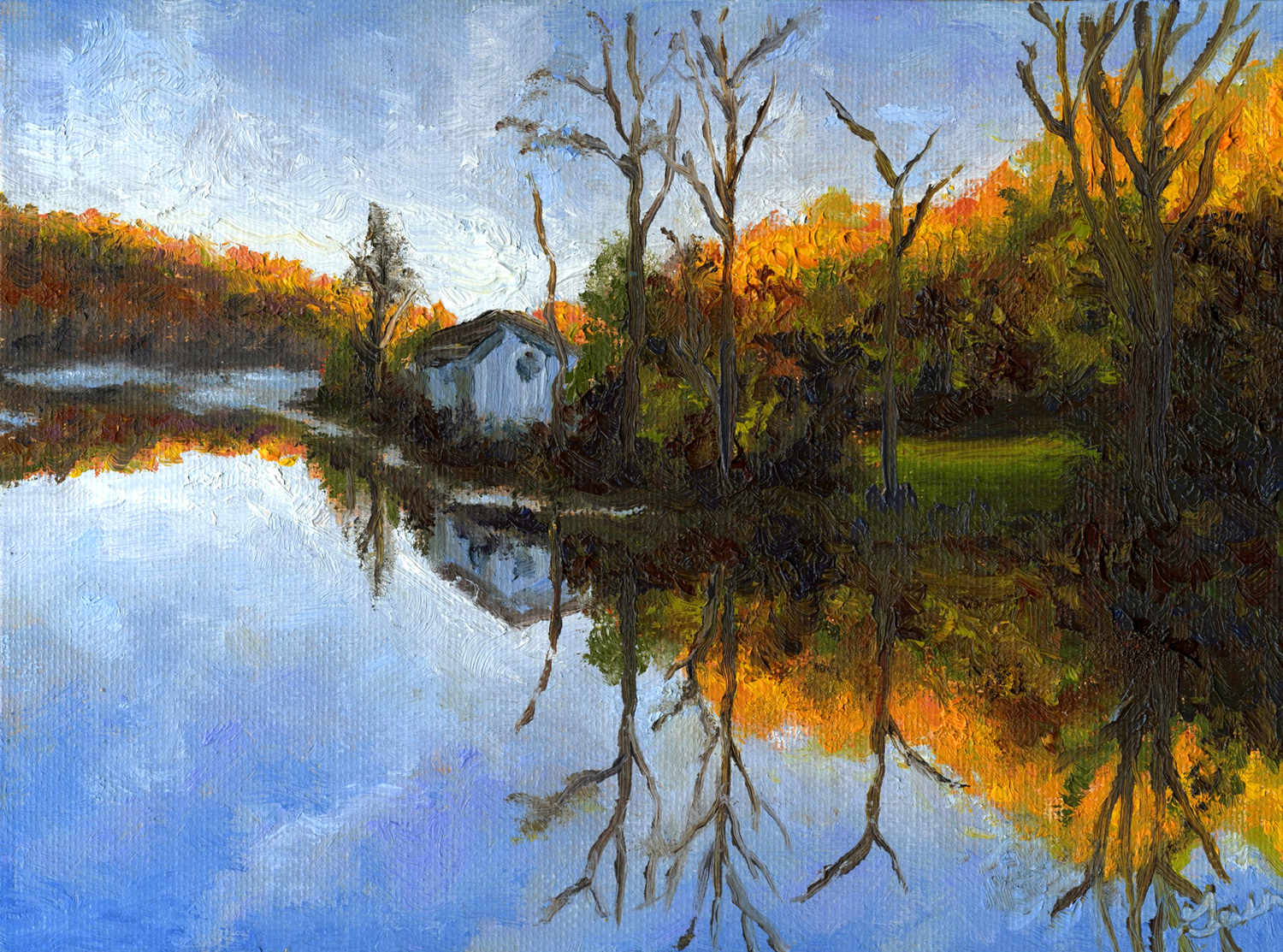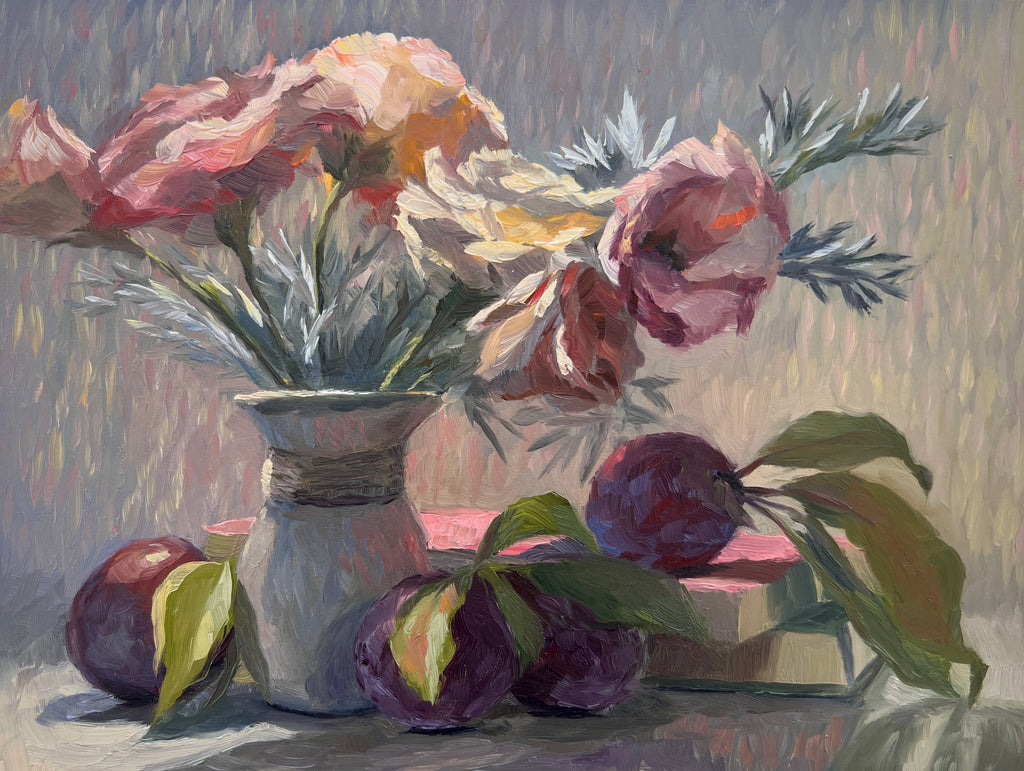Striking Scenery and Outdoor Oil Paintings for Sale
Striking Scenery and Outdoor Oil Paintings for Sale
Blog Article
Checking out Everything About Oil Paints: An Overview to Comprehending Their Elegance and Value
Oil paintings have actually mesmerized target markets for centuries, supplying a glance right into the creative mastery of various periods. Their rich history is intertwined with cutting-edge techniques and extensive emotional expression. Understanding the products and techniques behind these artworks can boost admiration. Furthermore, the marketplace for oil paints provides chances for collectors and capitalists alike. As one discovers this interesting world, the inquiry arises: what makes an oil paint genuinely valuable?
The Background of Oil Painting: A Trip With Time
Oil painting has origins that date back to old times, it truly prospered throughout the Renaissance, when artists discovered its flexibility and rich color potential. Early examples can be mapped to the 7th century, with techniques advancing notably throughout societies. The tool ended up being noticeable in Northern Europe in the 15th century, specifically through the works of artists like Jan van Eyck, that pioneered its use for in-depth realism and vivid shades. This duration marked a separation from tempera paints, permitting higher deepness and structure. As oil paint spread, it influenced numerous musicians, resulting in work of arts by prominent figures such as Leonardo da Vinci and Rembrandt. The medium's tradition proceeds, forming the art globe well into contemporary times.
Recognizing Oil Repaints: Products and Techniques
As musicians check out the world of oil paints, they come across a varied array of materials and methods that specify this tool. The key components of oil paint include pigments, which supply shade, and drying out oils, such as linseed, that bind the pigments and promote application. Numerous additives can customize the paint's structure and drying time, improving convenience. Techniques like glazing, where transparent layers are built up, and impasto, which involves applying thick paint, permit different aesthetic results. In addition, making use of brushes, scheme blades, and also fingers can develop one-of-a-kind appearances and coatings. Comprehending these products and methods makes it possible for musicians to completely reveal their imagination and accomplish the preferred effect in their artwork.
The Role of Color in Oil Paints
Color plays a critical duty in oil paints, influencing both aesthetic charm and emotional vibration. Comprehending shade theory basics, consisting of the partnerships in between hues, can boost an artist's capacity to communicate state of mind and environment. Additionally, understanding shade blending strategies permits better deepness and splendor in a painting's palette.

Color Concept Fundamentals
Comprehending color concept is necessary for artists dealing with oil paints, as it forms the structure for creating aesthetically interesting and unified compositions. Color concept encompasses the research of exactly how shades connect, the color wheel, and the connections in between primary, second, and tertiary colors. Musicians use corresponding colors to improve contrasts and create focal factors, while similar colors advertise unity and cohesiveness within an item. Additionally, the principles of great and cozy shades affect the understanding of depth and space in a paint. Realizing these principles permits artists to adjust color properly, directing the visitor's eye and communicating their designated message. Proficiency of shade concept ultimately improves an artist's capacity to convey feelings and ideas via their work.
Psychological Impact of Shade
The emotional effect of shade in oil paints plays a vital duty in how customers connect and view with art work. Colors evoke certain sensations and state of minds, influencing the audience's emotional state. For example, cozy hues like reds and oranges can develop a feeling of heat and energy, while trendy tones such as blues and greens typically stimulate peace or self-contemplation. Artists tactically pick shade schemes to boost narrative components, leading the target market's psychological journey. The saturation and contrast of colors even more magnify these impacts, drawing attention and creating emphasis. Ultimately, the interplay of shades in oil paints not just improves their aesthetic allure but likewise acts as a powerful tool for psychological expression, enriching the viewer's experience and analysis.
Shade Mixing Techniques
While numerous aspects of oil painting add to the general structure, mastering shade blending techniques is important for accomplishing preferred impacts and depth. Color mixing can be come close to via numerous techniques, including the subtractive and additive processes. Additive mixing includes combining shades of light, while subtractive blending depends on pigments, where colors blend to create brand-new tones. Artists frequently utilize a restricted palette to produce harmonious jobs, recognizing the connections in between key, second, and tertiary shades. Strategies such as glazing and scumbling further improve deepness and luminosity. By skillfully mixing colors, a musician can stimulate emotions, produce prime focus, and accomplish a sense of realism, ultimately raising the paint's aesthetic and psychological influence.
Famous Oil Painters and Their Iconic Works

Renowned for their mastery of shade and technique, oil painters have actually developed some of one of the most well known artworks in history. Distinguished musicians like Vincent van Gogh astounded target markets with his emotive brushwork in "Starry Night," while Claude Monet's "Impression, Dawn" laid the foundation for Impressionism. Leonardo da Vinci's "Mona Lisa" stays an enduring sign of creative brilliant, showcasing his skill in capturing human expression. Rembrandt's "The Evening Watch" shows his ingenious use of light and shadow. Various other remarkable numbers consist of Pablo Picasso, who transformed contemporary art with his vibrant testing in works like "Les Demoiselles d'Avignon," and Georgia O'Keeffe, whose dynamic depictions of flowers and landscapes aided define American modernism. Each artist's unique design contributed substantially to the oil paint landscape.
Just how to Review the Top Quality of an Oil Paint
Examining the top quality of an oil paint includes a mindful assessment of craftsmanship strategies, in addition to an analysis of shade and structure. Observing brushwork, layering, and the application of paint can reveal the musician's skill degree. Furthermore, the interplay of shades and more info the overall plan of components add substantially to the painting's aesthetic value.
Analyzing Workmanship Methods
A precise assessment of craftsmanship strategies is crucial for determining the top quality of an oil paint. Evaluators should initially take a look at the application of paint; thick, textured brushstrokes may recommend a knowledgeable hand, while excessively consistent applications might show a lack of deepness. oil paintings for sale. The layering strategy is likewise crucial; the existence of lusters and varied thickness can boost luminance and complexity. In addition, the high quality of the materials utilized, such as the canvas and pigments, plays a significant duty in longevity and general visual. Interest to information in aspects like edges and changes between shades mirrors the artist's dedication to their craft. Ultimately, these techniques add to the paint's emotional effect and market worth, offering as indicators of the artist's skill and intent
Assessing Color and Composition
While assessing the top quality of an oil paint, one need to concentrate on the interaction of color and composition, as these aspects are basic to the artwork's overall effect. Shade choices can develop and stimulate feelings state of mind; for that reason, the musician's combination need to be analyzed for harmony and comparison. A well-balanced composition directs the audience's eye and produces a sense of unity. Artists commonly utilize methods like the policy of thirds or leading lines to improve visual passion. Furthermore, making use of light and darkness can add deepness, boosting the three-dimensionality of the paint. Eventually, an effective oil painting weds color and structure, involving the customer and welcoming a deeper recognition of the musician's vision and method.
Caring for and Preserving Oil Paintings
Proper treatment and conservation of oil paintings is vital for keeping their honesty and longevity. To safeguard these art work, it is crucial to display them away from straight sunlight, which can cause fading and staining. Preserving a stable environment with controlled temperature and moisture additional aids in preventing damages. Cleaning up ought to be done delicately utilizing a soft, dry towel, preventing any harsh chemicals that could hurt the paint or varnish. Regular examinations for indications of wear and tear, such as flaking or fracturing, are a good idea. When saving or transferring oil paints, proper padding and framing are essential to prevent physical injury. Eventually, attentive care adds to the visual charm and worth of oil paintings gradually.
The Market for Oil Paintings: Collecting and Investing
Comprehending the marketplace dynamics for oil paintings is crucial for investors and collection agencies alike. The worth of these artworks is affected by numerous elements, including the musician's reputation, historical relevance, and existing trends. Collection agencies commonly look for pieces that resonate directly while considering possible recognition in worth. Galleries and public auctions work as key places for acquiring and marketing, with costs varying based on demand and rarity. Buying oil paintings requires research study right into the marketplace, as well as an understanding of credibility and provenance. In addition, emerging musicians might provide possibilities for significant returns, while established names can regulate high prices. In general, a critical method to accumulating can yield both aesthetic enjoyment and economic rewards.

Often Asked Questions
What Are the Ecological Impacts of Oil Paint Products?
The ecological influences of oil painting products include the release of unstable natural compounds (VOCs), dangerous waste generation, and source removal for pigments. These factors add to contamination and ecological deterioration, increasing worries amongst eco aware musicians and customers.
How Do Different Canvases Impact Oil Paint Results?
Different canvases influence oil paint results significantly. Surface area, absorbency, and appearance top quality can change paint application, drying out times, and color vibrancy. Artists frequently select specific canvases to attain wanted impacts and enhance their creative expression.
Can Oil Paintings Be Brought Back if Damaged?
If damaged, Oil paintings can without a doubt be restored. Expert conservators use numerous strategies to repair splits, tidy surfaces, and address staining, guaranteeing that the artwork preserves its initial beauty and value for future generations.
What Are the Indicators of an Initial Oil Paint?
The signs of an initial oil painting consist of noticeable brush strokes, texture variations, and an unequal canvas weave (oil paintings for sale). In addition, authenticity might be verified with provenance, signatures, and the presence of a varnish layer one-of-a-kind to oil mediums
How Has Modern Technology Influenced Modern Oil Painting Techniques?
Technology has significantly influenced contemporary oil painting techniques by presenting electronic devices for preparation, boosted materials for texture and longevity, and on the internet systems for sharing and offering art, consequently broadening artists' creative possibilities and audience reach. Oil paint has roots that date back to old times, it absolutely thrived during the Renaissance, when artists discovered its convenience and abundant color capacity. The psychological effect of color in oil paintings plays an important role in how visitors link and regard with artwork. While numerous facets of oil paint contribute to the overall structure, grasping shade mixing strategies is essential for achieving preferred impacts and deepness. Evaluating the high quality of an oil painting involves a careful evaluation of workmanship strategies, as well as an evaluation of shade and composition. While assessing the high quality of an oil paint, one have to concentrate on the interaction of shade and make-up, as these elements are basic to the art work's overall impact.
Report this page